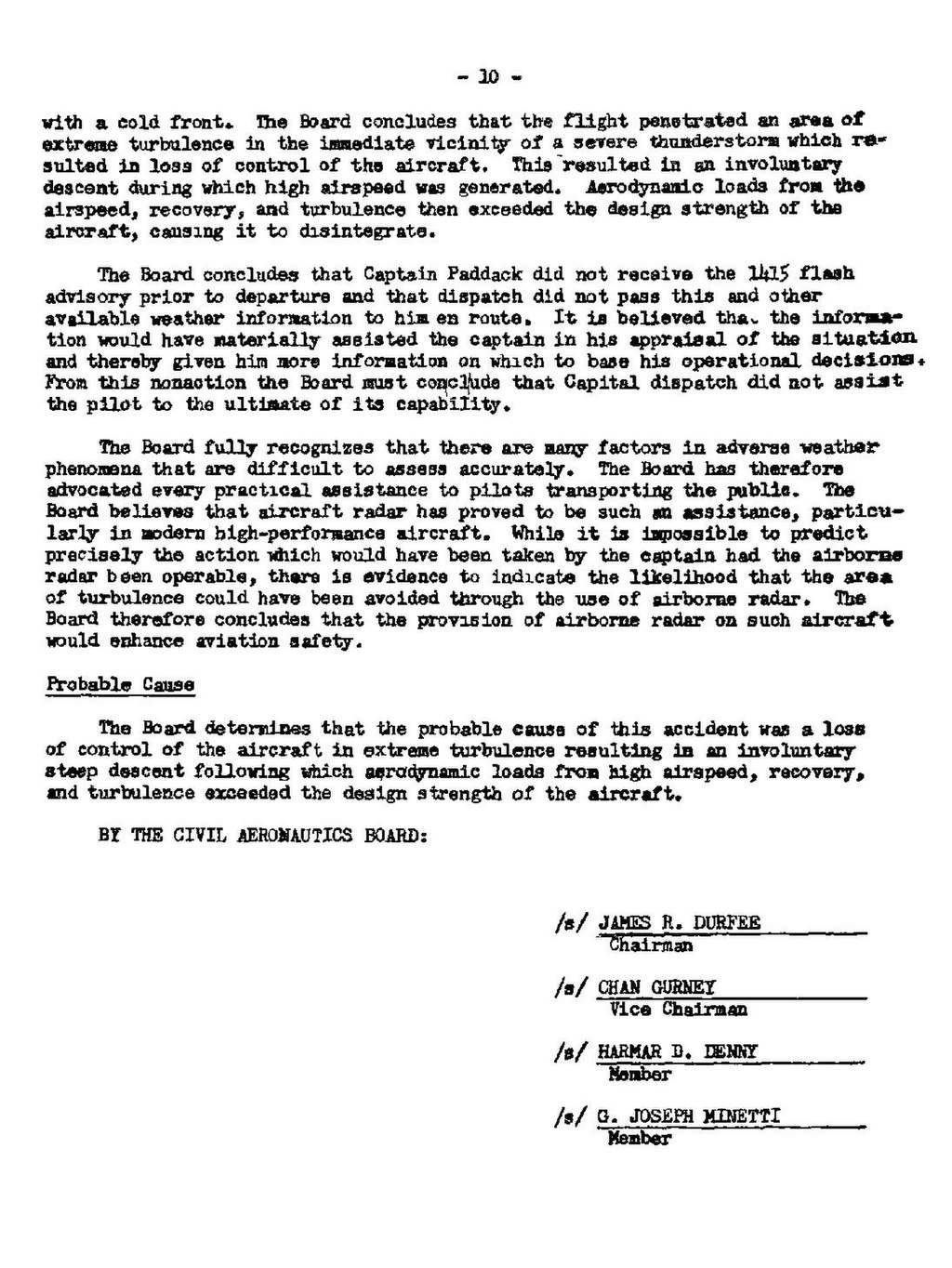- 10 -
with a cold front. The Board concludes that the flight penetrated an area of extreme turbulence in the immediate vicinity of a severe thunderstorm which resulted in loss of control of the aircraft. This resulted in an involuntary descent during which high airspeed was generated. Aerodynamic loads from the airspeed, recovery, and turbulence then exceeded the design strength of the aircraft, causing it to disintegrate.
The Board concludes that Captain Paddack did not receive the 1415 flash advisory prior to departure and that dispatch did not pass this and other available weather information to him en route. It is believed that the information would have materially assisted the captain in his appraisal of the situation and thereby given him more information on which to base his operational decisions. From this nonaction the Board must conclude that Capital dispatch did not assist the pilot the the ultimate of its capability.
The Board fully recognizes that there are many factors in adverse weather phenomena that are difficult to assess accurately. The Board has therefore advocated every practical assistance to pilots transporting the public. The Board believes that aircraft radar has proved to be such an assistance, particularly in modern high-performance aircraft. While it is impossible to predict precisely the action which would have been taken by the captain had the airborne radar been operable, there is evidence to indicate the likelihood that the area of turbulence could have been avoided through the use of airborne radar. The Board therefore concludes that the provision of airborne radar on such aircraft would enhance aviation safety.
Probable Cause
The Board determines that the probable cause of this accident was a loss of control of the aircraft in extreme turbulence resulting in an involuntary steep descent following which aerodynamic loads from high airspeed, recovery and turbulence exceeded the design strength of the aircraft.
BY THE CIVIL AERONAUTICS BOARD:
/s/ JAMES R. DURFEE
Chairman
/s/ RCHAN GURNEY
Vice Chairman
/s/ HARMAR D. DENNY
Member
/s/ G. JOSEPH MINETTI
Member
